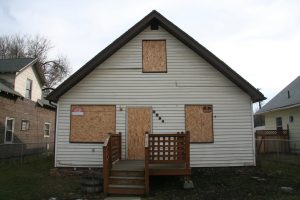 Unfortunately, 2018 has been another year of major disasters due to hurricanes, fires, and floods. As taxpayers turn to the process of restoring property, some may be considering whether a 1033 exchange is more relevant than a 1031 exchange.
Unfortunately, 2018 has been another year of major disasters due to hurricanes, fires, and floods. As taxpayers turn to the process of restoring property, some may be considering whether a 1033 exchange is more relevant than a 1031 exchange.
This blog entry examines some of the key aspects of the 1033 exchange.
What is an IRC 1033 exchange?
A section 1033 exchange, named for Section 1033 of the Internal Revenue Code, applies when you lose property through a casualty, theft or condemnation and realize gain from the insurance or condemnation proceeds. If your accountant or tax advisor believes you will realize gain from the insurance or condemnation proceeds, you may be able to defer that gain using a 1033 exchange.
Compared to IRC 1031
Internal Revenue Code Section 1031, commonly referred to as a “like-kind exchange,” does not allow a taxpayer to hold or benefit from the proceeds during the exchange period. It also requires the replacement property be identified within 45 days and acquired within 180 days after the closing of the relinquished property. If a taxpayer is deferring gain in a 1033 exchange, he can hold the proceeds until the acquisition of the replacement property and an intermediary is not required.
Replacement property
Another difference between a 1031 and a 1033 exchange is the standard that is used to limit what you can buy as replacement property. In general, the standard is more restrictive under 1033 than the like-kind standard under IRC 1031. Section 1033 provides the replacement property must be “similar or related in service or use” to the property that was lost in the casualty or condemnation. It is important to note the Tax Cuts and Jobs Act of 2017 eliminated tax-deferred like-kind exchanges of personal property, but allows exchanges of business and investment real estate.
Time period
The time period allowed for the taxpayer to acquire the replacement property is much more liberal than Section 1031 exchanges. The period begins at the earlier of when the taxpayer first discovers the threat or imminence of condemnation proceedings or when the condemnation or other involuntary conversion occurs. The period ends either two or three years after the end of the tax year in which the conversion occurs. The time period is three years for real property held for business or investment and two years for all other property. If the taxpayer has lost property in a federally declared disaster area, Section 1033 gives the taxpayer a two year extension on the replacement period, granting a total of four years in which to replace the lost property.
Taxpayers having lost their property due to casualties or those facing condemnation should consult with their tax advisors to take advantage of the tax deferral afforded under Section 1033 if they wish to replace their lost property.
We’ve got your back
With Simon Filip, the Real Estate Tax Guy, on your side, you can focus on your real estate investments while he and his team take care of your accounting and taxes. Contact him at sfilip@krscpas.com or 201.655.7411 today.





